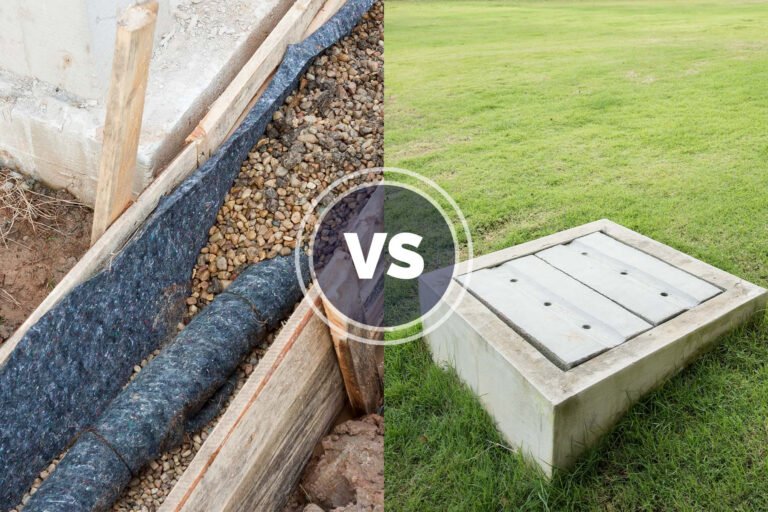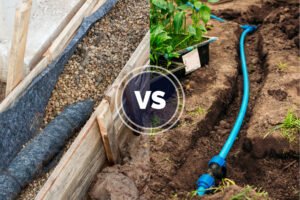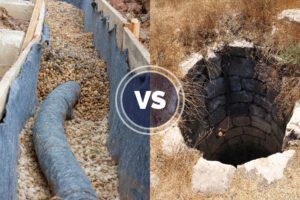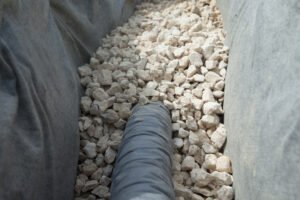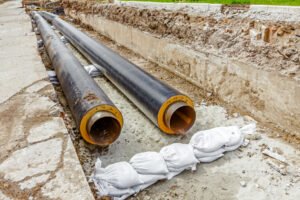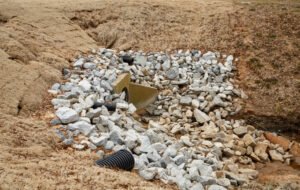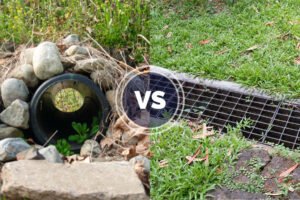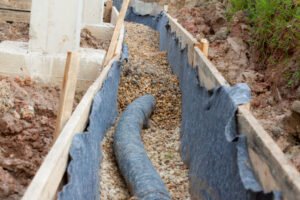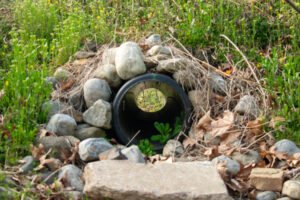Surface water is indeed a menace to your backyard. It deteriorates the landscape and damages the foundations. And not only does it look hideous, but it smells awful too, isn’t it? So, you need the right surface drain to catch the excess water runoff and disperse it far off.
And, french drains and catch basins will help you do so efficiently. A french drain is a long trench drain that channels water, whereas a catch basin is a storm drain that collects and disperses water. But, how do you analyze the two and pick the best for your yard?
Well, breathe hard and relax! We compared the two drain systems and listed all the pros, cons, costs, and problems with each to help you decide. So, without further delay, let’s evaluate more!
1. French Drain
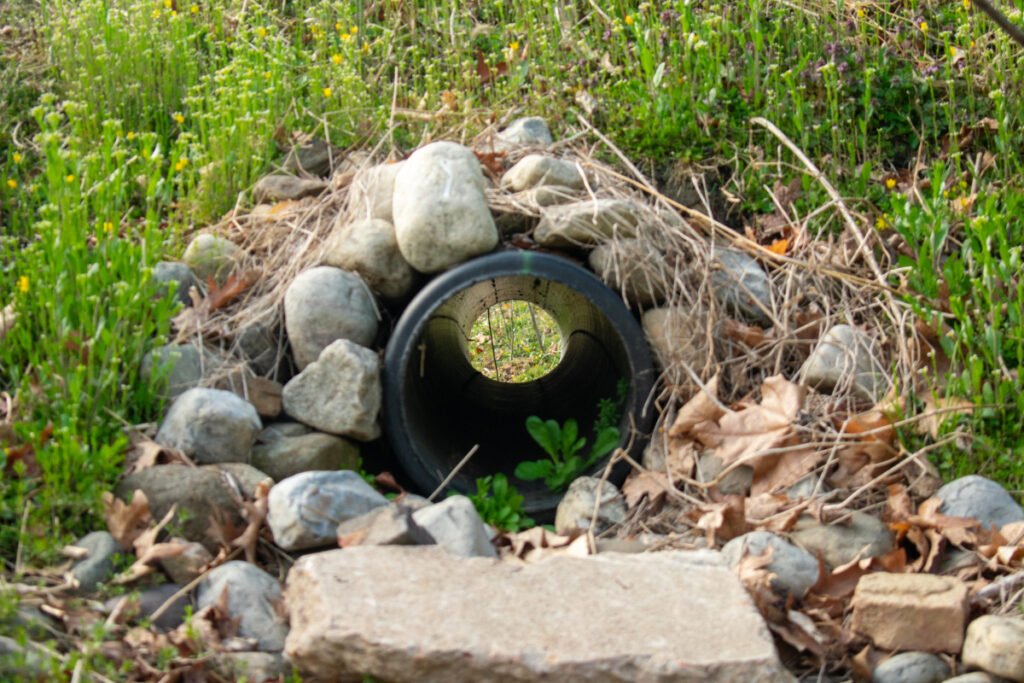
What Is It: A french drain is a deep drainage trench with a perforated pipe that absorbs surface water and lets it down to the soil below. But, you must dig and layer it with gravel or landscape fabric for optimal function.
How Does It Work: A french drain absorbs the surface water from the top and disperses it to low-lying areas, drainage ditches, or dry wells in the yards, using gravity, storm drains, or any drainage system. Thus, it accelerates the natural water flow and draws it away from the foundation.
A french drain is a perfect drain system that prevents flooding, surface water percolation, and marshiness and relieves the extra pressure from your retaining wall.
And, since it’s lined with landscape fabric and a lot of gravel, it won’t damage your hardscape like a catch basin and prevent soil erosion simultaneously. Moreover, it’s effortless to clean but might clog easily due to soil or grassroots.
However, it requires professional french drain installation, unlike a catch basin that can be DIY.
| Average Cost | $ 10 – 90 per linear foot |
| Average Lifespan | 8 – 10 years |
| Pipe Materials | Corrugated or perforated Iron or PVC pipe |
Where to Use a French Drain?
French drains prevent soggy ground and flooding over a large area. So, they are best used for downward-sloping sites that channel water to the side of the house and disperse it downwards.
- Around the foundation, decks, verandahs, or patios
- Along the basement ramps, walls, and sumps
- Along a hardscape driveway or paved area
- On downward slopes to prevent run-off
- Inside a bog or rain garden
- Besides retaining walls or slope
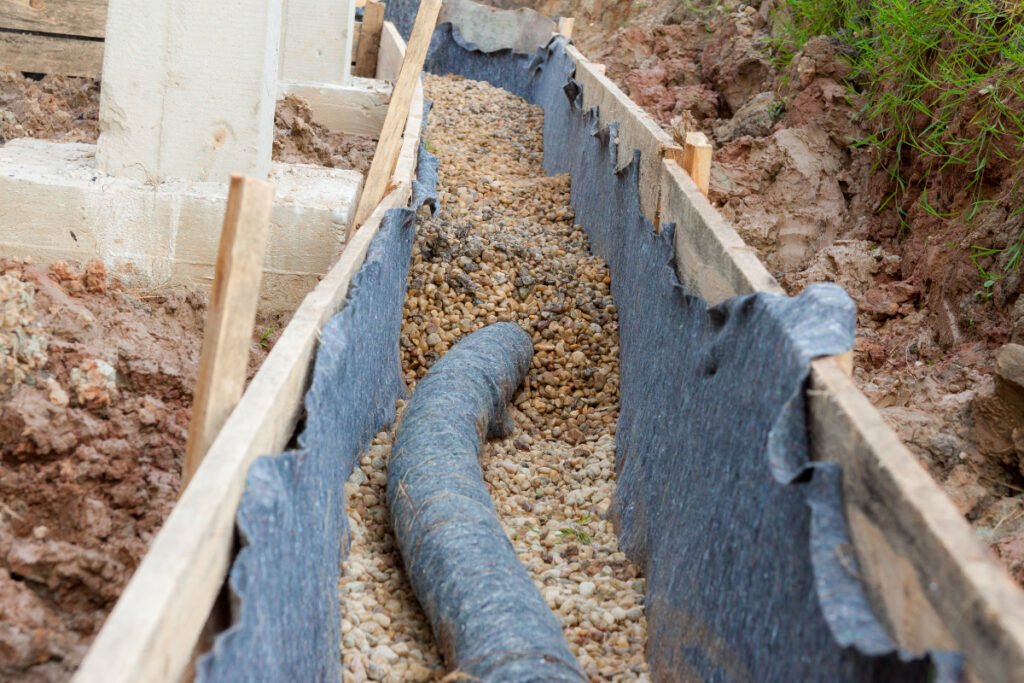
How Much Does a French Drain Cost?
Generally, a french drain system costs about $5000-6000 for the complete installation in a small or medium-sized backyard, while a catch basin costs just $2000. But, the overall cost varies with the type, labor, and materials as given below:
| Perimeter French Drain | $10 – 50 per linear foot |
| Interior French Drain | $40 – 90 per linear foot |
| Curtain French Drain | $10 – 25 per linear foot |
| Trench Drains | $30 – 90 per linear foot |
Pros:
- Prevent flooding and long-term water damage
- Cost-effective
- Aesthetic and doesn’t disrupt your landscape
- Homeowners can select the routes of water diversion
- Has a perforated pipe that absorbs water from all directions
- Boosts the resale value of a house
Cons:
- Difficult to Install and Repair
- Can clog and overflow in high-flood areas
- Low Durability and Lifespan
- Inefficient in high-rainfall areas
- May require a sump pump for better and faster drainage
Use a high-pressure water jet or run a plumber’s snake to unclog the french drain and improve its surface drainage capacity.
2. Catch Basin
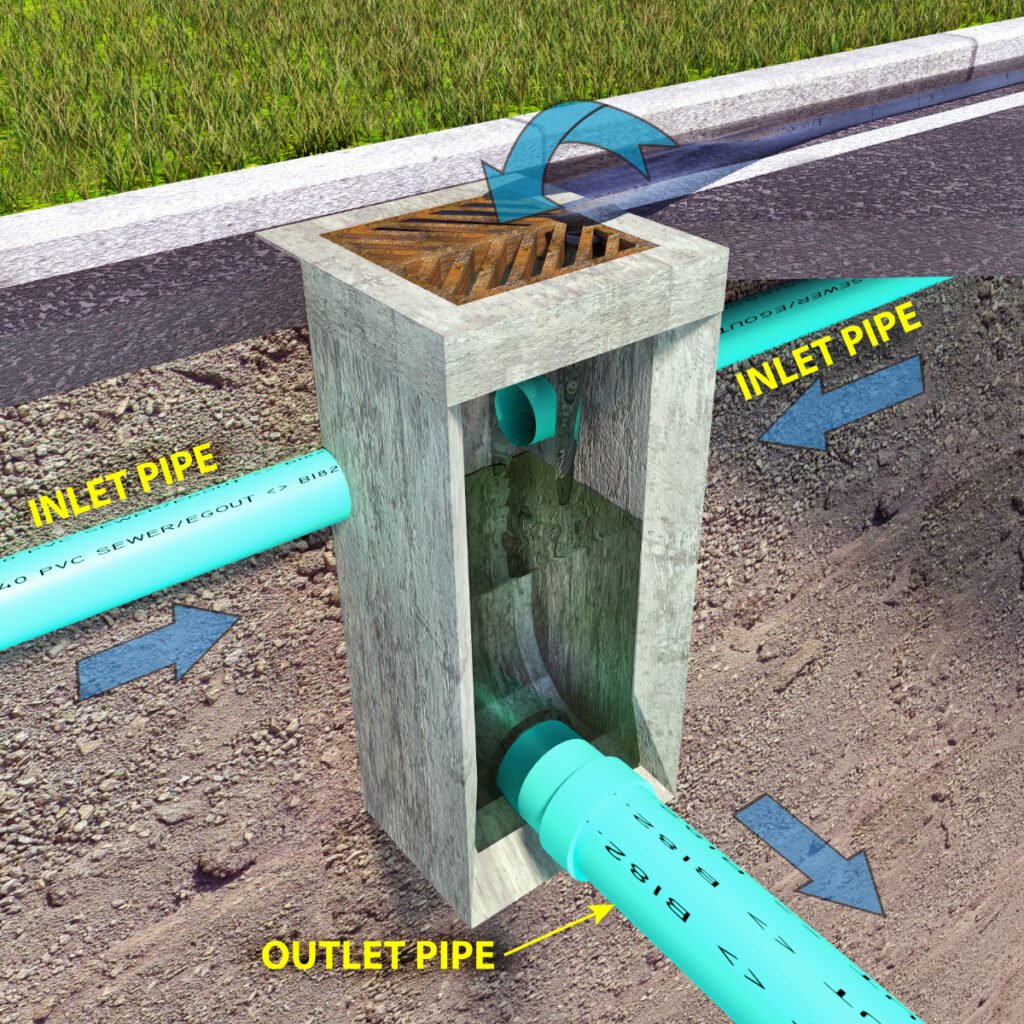
What Is It: A catch basin is a simple 1-foot X 1-foot plastic or concrete box with flexible drainage pipes and sturdier atrium grates that absorb water through the pipe and direct it downhill with the help of gravity.
How Does It Work: A catch basin absorbs excess stormwater into its box and discharges it through an outlet drain pipe into another low-lying area. Moreover, it traps twigs, grass, and other debris in the grate, unlike a french drain that clogs due to debris.
A catch basin is used for a high rainfall area with low drainage. It collects water from all your drains and downspouts and relocates it away from your basements and foundations. However, it attracts pests, mildew, and mosquitos and might collapse with extreme water flow. So, regular maintenance is a must.
| Average Cost | $ 2000 – 5000 |
| Average Lifespan | 15 – 20 years |
| Basin Materials | Brick, Concrete or Metal |
Where to Use a Catch Basin?
Catch Basins are typically constructed in low-lying areas, unlike a french drain installed directly in the backyard. So, they are used under the roof and terrace gutters to catch water effectively. Some more applications include:
- Backyards with high flooding and runoff
- Low-lying areas and catchments
- Under downspouts and roof-drain systems
- Near basement sumps and cellars
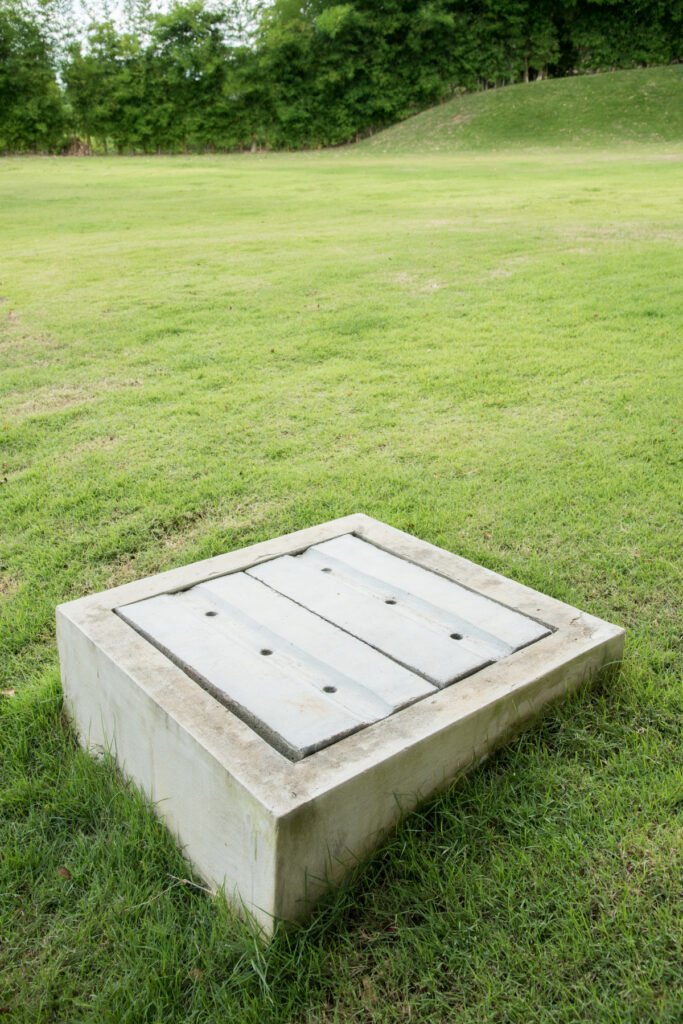
How Much Does a Catch Basin Cost?
Catch basin installation costs only about $2000 – 3000, i.e, half the price of french drain installation for small-sized yards and plots. However, the overall cost depends on the utility lines, labor, and installation as given in the table below:
| Concrete Catch Basin | $2800 – 3500 |
| Metal Catch Basin | $2000 – 3000 |
| PVC Catch Basin | $1000 – 1500 |
Pros:
- Minimizes your drainage problem and prevents overflowing
- Absorbs all the roof and downspout discharge
- Eliminates flooding in your yards and basements
- Boosts your home’s resale value
- Eliminates standing water and indoor flooding
Cons:
- Might attract mosquitoes and other insects
- Deforms and breaks on heavy runoff
- Releases debris and trash during heavy rainfall
- Emits foul odors with time
Never drain any flammable substances, chemicals or acids down your catch basin as these may corrode and damage it.
What Are the Potential Problems with a French Drain?
A french drain requires precision and some manual work. So, it is not only tedious to install but also requires correct mounting for the slope and perforations, failing which might cause several problems as mentioned below:
- Pipe and Utility Issues: A french drain might interfere with the existing power lines, gas lines, and other utilities and might cause a mishap during monsoon.
- Difficult Installation: A french drain system is challenging to install, especially on rocky soils that are difficult to dig.
- Clogging: A french drain pipe might clog or choke with silt and sediment and overflow or backflow into the house.
- Leaking and Mold: French drain pes might leak due to excess flooding and humidity and might cause molds and mildew around the drain pipe and trench.
- Changing Slope: French drains might change their slope with soil displacement and weather, damaging your drain tile and aggravating the drainage problem.
What Are the Potential Problems with a Drainage Catch Basin?
Catch basins are sturdy and meant for heavy-duty yard drainage. But, they might break or leak with heavy rainfall or get overburdened with sediments that might cause several issues as mentioned below:
- Clogged Catch Basin: Catch basins can clog due to the incorrect shape or heavy deposition of silt, debris, and tree roots over time. Thus, they might stop draining and flood your backyard.
- Damage and Breaking: A catch basin might crack or break due to excess run-off and might overflow into the yard.
- Damaged Grate Cover: Dirt, debris, and gravel might accumulate on your grate cover and prevent water from getting inside the drain pipe. Thus, it might flood the area and disrupt the drainage system.
Comparing French Drains and Catch Basins at a Glance
| Parameter | French Drain | Catch Basin |
| Climate | Low rainfall, Low flooding | High rainfall, High flooding |
| Type of runoff | Surface water | Storm water |
| Lifespan | Low | High |
| Applications | Small yards, Sloping sites and Basements | Bigger yards and Residential or Commercial sites |
| Shape | Rectangular | Rectangular or square catch basin for residential sites and circular for commercial areas |
| Pipe | Perforated or Corrugated pipe | Simple, solid drainage pipe |
| Potential Problems | Clogging, Leaking and Changing Slope | Clogging, Breaking and Damaged Grate cover |
| Best Used | Around foundations and basements | Under gutters and downpipes |
Can You Combine a French Drain and a Catch basin?
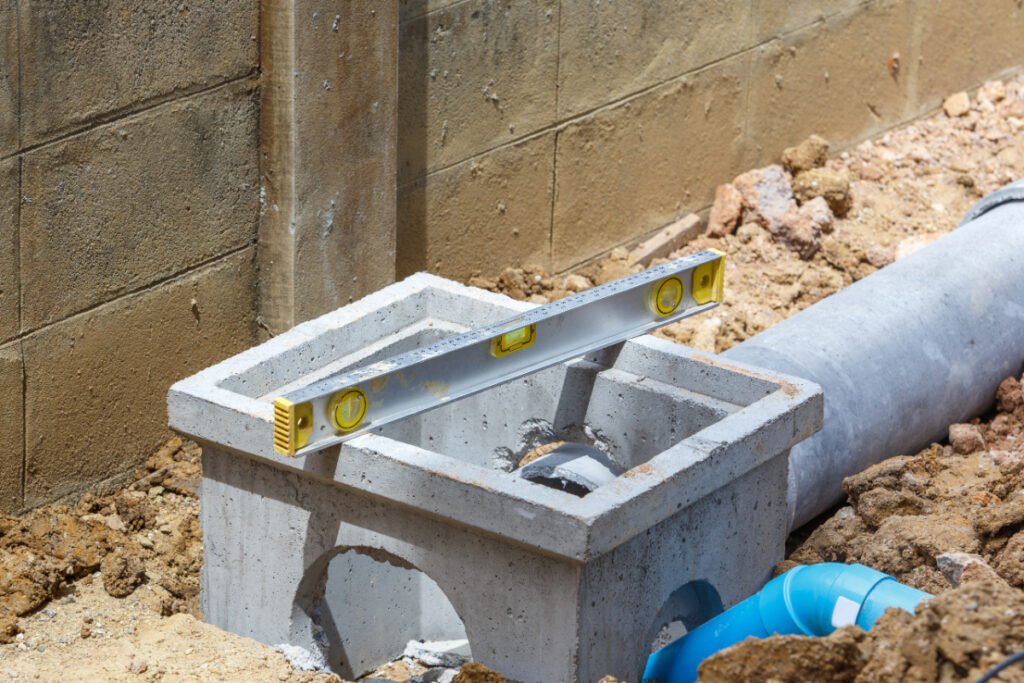
Yes, you can combine a french drain and a catch basin in locations with prolonged rainfall and high surface flooding. To do so, add a catch basin directly beneath your downspout and channel its drainage towards the french drain, thus discharging it downhill.
And here’s how you can add a catch basin to a french drain in no time:
Materials you’ll need:
- Catch basin
- 4-inch PVC drain pipe
- Grate cover or channel drain
- Landscape fabric
- Silicone caulk
Tools you’ll need:
- Trench shovel
- String or Stakes
- Hammer or Millet
- Step 1: Dig an 18 – 20 inches hole and add a 6-inch gravel layer underneath. Use a stake and mount the catch basin’s pipe on the ground.
- Step 2: Connect one of its ends to the french drain pipe and install a durable, heavy-duty grate cover at the other.
- Step 3: Pour a thick layer of gravel along the sides of the catch-basin pipe and seal it with silicone caulk.
- Step 4: Extend the pipe towards the drain and drill several weep holes to prevent water flooding.
- Step 5: Finally, add a pop-up emitter to the catch basin and build a barrier to hold the gravel in place.
Does a French Drain Need a Catch Basin?
French drains don’t require a catch basin unless installed in low-lying areas, water channels, or under the roof gutters. But, you can add catch basins in areas of heavy rainfall and flooding to prevent clogging drains and backflow into the house.
Don’t forget to add a 6-8” layer of gravel to support the pipe and the basin without displacing them.
Can You Install a Catch Basin Without a French Drain?
A catch basin needs a separate discharge pipe of some sort, but it doesn’t have to be a french drain pipe necessarily. You can install it with a french drain to prevent surface flooding, but you can also use any standard corrugated pipe to direct it towards a dry well or pond.
Which Is Better – French Drain or Catch Basin?
A French drain is excellent for preventing surface flooding in low rainfall areas, whereas a catch basin is suitable to drain storm or terrace water in high rainfall areas. But, you can combine a french drain and catch basin and have a hybrid drainage system that tackles all forms of water runoff in your backyard.
When Should You Use a French Drain?
You should use a french drain if you have a lot of surface flooding in your yard and along paved or hardscape areas that don’t absorb water. You can even use it on a naturally sloping site to help drain the excess water and have a clear landscape.
When Should You Use a Catch Basin?
You should use catch basins under the roof and terrace gutters that discharge a lot of stormwater to the ground and cause flooding. Additionally, you may install these in low-lying areas on your site to prevent marshes and swamps.
French drains and catchbasins are both efficient drainage systems. But, french drains are used for moderate amounts of surface water, whereas catch basins help drain storm water run-off. And while french drains can be combined with different grasses and gravel, catch basin grates are easily visible and might disrupt your landscape.
So, now that you know how both drain systems work, you can choose the best one for your backyard. However, since french drains are a bit challenging to install, you must hop on to our guide on French Drain Mistakes to clear all your doubts and difficulties.

